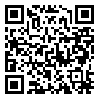BibTeX | RIS | EndNote | Medlars | ProCite | Reference Manager | RefWorks
Send citation to:
URL: http://irj.uswr.ac.ir/article-1-361-en.html
Objectives: Researchers have focused their attention on balance in the elderly because there is a significant correlation between balance and fall. Therefore, it is very important to identify the factors that can affect elderly balance. The aim of this study was to investigate relation between sustained attention and balance in elderly.
Methods: This cross sectional study was conducted in 2013 in Semnan city. Convenience sampling was used to enroll 50 old people according to inclusion and exclusion criteria. Sustained attention was measured by continued performance test and static and dynamic balance was evaluated by biodex system. Data was analyzed using SPSS 16 software. Having a normal distribution via Kolmogorov smirnov test, the relationship between each characteristic was assessed through using Pearson correlation coefficient and independent t-test.
Results: The participants’ mean(±SD) age was 65.48±4.36 years, static balance with eyes open 3.64±2.69, eyes closed 4.10±2.47, dynamic balance with eyes open 4.55±2, eyes closed 6.65±1.98 and omission error was 2.56±4.11. Among the four balance indexes and Sustained attention, Pearson correlation was only significant in dynamic balance with eyes closed and sustained attention.
Discussion: Considering the significant correlation between sustained attention and dynamic balance with eyes closed, it can be said that this correlation will become significant by increasing the difficulty level of the balance task.
Received: 2013/10/21 | Accepted: 2013/11/10 | Published: 2013/12/1
| Rights and permissions | |
 |
This work is licensed under a Creative Commons Attribution-NonCommercial 4.0 International License. |





